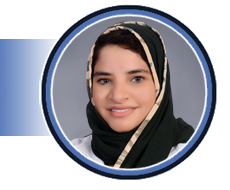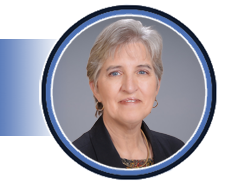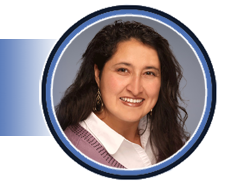2025 SDMS Annual Conference Session Details
Morning Yoga | 1.0 SDMS CME Credit | Category: OT | Content Level: Beginner
This session addresses upper body tension and postural strain common in sonography. Participants will explore the major muscle groups of the shoulder, neck, and upper back, and learn safe stretching and self-myofascial release techniques using props. Emphasis will be placed on improving mobility and supporting postural alignment.
Objectives:
- Identify major muscle groups of the shoulder, neck, and upper back, including the upper trapezius, levator scapulae, rhomboids, sternocleidomastoid, scalene group, and rotator cuff muscles.
- Demonstrate safe and effective stretches that support mobility, reduce muscular tension, and promote postural alignment.
- Describe the role of fascia and apply self-myofascial release techniques using props to target common tension areas for sonographers.
Space is limited. Spots are available on a first come, first served basis.

Brandy Sundberg, MHPTT, RT (R), RDMS
Assistant Professor and Women’s Health Education Leader
University of Nebraska Medical Center and GE HealthCare
Brandy Sundberg is an assistant professor at the University of Nebraska Medical Center and an advanced practice sonographer with more than 20 years of experience in perinatal imaging, specializing in fetal neurosonography. She holds a master’s degree in Health Professions Teaching and Technology and is currently pursuing a PhD. Brandy is co-founder of CalmStrong Education, a platform delivering OB imaging education to sonographers nationwide. A certified mindfulness meditation and yoga teacher, she also works with healthcare providers and elite military professionals to promote resilience and reduce burnout through evidence-based wellness practices.
Abdominal + Track | 1.0 SDMS CME Credit | Category: PS | Content Level: Intermediate
Pediatric ultrasound requires a specialized skill set that differs significantly from adult imaging. This session highlights core distinctions in scanning technique, anatomy, and workflow, helping sonographers refine their approach to younger patients. Attendees will gain practical insights to improve efficiency, confidence, and diagnostic accuracy in pediatric imaging.
Objectives:
- Understand the key differences between pediatric and adult ultrasound imaging, including technique adaptations for younger patients.
- Recognize the unique ultrasound characteristics of pediatric anatomy and how they differ from adult structures.
- Apply best practices to overcome common challenges in pediatric ultrasound, improving both efficiency and diagnostic accuracy.
 Cara Hill, BS, RDMS, RVT, RT(R)
Cara Hill, BS, RDMS, RVT, RT(R)
Clinical Education Specialist
GE HealthCare
Cara Hill is a dedicated expert in pediatric ultrasound with extensive experience in clinical practice, education, and industry. She has taught in diagnostic medical sonography programs, including at her alma mater, Misericordia University, and now contributes to clinical education in her role at GE HealthCare. Cara is also the program manager for the RAD-AID Laos Project, where she focuses on expanding imaging education and ultrasound access through global health initiatives. She actively volunteers with SDMS and is passionate about mentorship, education, and advocating for continuous growth within the profession.
Cardiac Track | 1.0 SDMS CME Credit | Category: AE | Content Level: Beginner
Although M-mode echocardiography is no longer a primary tool for measuring chamber size or valve function, it still offers valuable diagnostic insight. This session reviews how M-mode can enhance clinical interpretation by revealing subtle structural and functional findings and providing precise timing information.
Objectives:
- Describe how M-mode should be performed and when it can be relied upon for accuracy.
- Identify sonographic clues on M-mode tracings that indicate valvular abnormalities.
- Apply M-mode techniques to assist with timing-related diagnostic questions.
 Elizabeth McIlwain, MHS, ACS, RCS, FASE
Elizabeth McIlwain, MHS, ACS, RCS, FASE
Clinical Director Procedural/Outpatient Services
West Jefferson Medical Center/LCMC Health
Elizabeth McIlwain is a graduate of Louisiana State University Health Sciences Center, where she earned a Bachelor of Science in Cardiopulmonary Science and a Master of Health Science in Health Care Administration. She holds credentials as a registered and advanced cardiac sonographer and has worked in cardiovascular ultrasound since 1985. Elizabeth has served in a wide range of roles—including sonographer, researcher, educator, consultant, and department director—and is currently the Clinical Director of Procedural/Outpatient Services at West Jefferson Medical Center in Marrero, Louisiana. She also serves as clinical faculty for the cardiovascular ultrasound program at LSUHSC. Elizabeth is actively involved with ASE, CCI, and SDMS, has co-authored The Handbook of Echo Doppler Interpretation, and regularly contributes to professional education and research. She proudly describes herself as “just an echo nerd.”
OB/GYN Track | 1.0 SDMS CME Credit | Category: OB | Content Level: Intermediate
This session reviews the sonographic features of normal fetal abdominal anatomy and examines findings associated with a variety of gastrointestinal and abdominal abnormalities. Ancillary sonographic markers will be discussed to support differential diagnosis, and guidance will be provided on optimizing image acquisition. Attendees will learn how to deliver the most relevant diagnostic information to the interpreting physician for effective case management.
Objectives:
- Recognize the sonographic features of normal fetal abdominal structures.
- Describe sonographic findings associated with fetal abdominal abnormalities.
- Correlate ancillary sonographic markers and determine essential images to support diagnostic accuracy.
 Kelsi McConnell, MHS, RDMS, RVT
Kelsi McConnell, MHS, RDMS, RVT
Practice Manager
Regional One Health
Kelsi McConnell is the practice manager at Regional One Health in Memphis, Tennessee, overseeing the Maternal Fetal Medicine department, the Center for High Risk Pregnancies, and the Gynecology East Department. She holds a bachelor's degree in diagnostic medical sonography from Baptist College of Health Sciences and a master’s degree in leadership and policy studies from the University of Memphis. Kelsi has taught sonography students, medical trainees, and residents throughout her clinical career and has participated in nationally published research projects. She has served as an adjunct professor and advisory board member for her alma mater and has been an active SDMS volunteer for over a decade. Her additional roles include JRC-DMS site visitor and contributing author for multiple chapters in the Textbook of Diagnostic Sonography, 9th edition.
Vascular Track | 1.0 SDMS CME Credit | Category: VT | Content Level: Intermediate
This session explores the influence of cardiopulmonary function on venous return and Doppler waveform interpretation in vascular ultrasound. Attendees will analyze how cardiac conditions alter vascular findings and review examples that connect heart and lung physiology with sonographic observations. The session also highlights cardiac procedures and potential vascular complications sonographers should recognize.
Objectives:
- Explain how cardiopulmonary function affects venous return and venous Doppler waveforms.
- Analyze common cardiac conditions to predict their influence on vascular ultrasound findings.
- Identify common cardiac interventions with potential vascular complications.
 Jessica Umbra, MHPTT, ACS, RDCS, RVT
Jessica Umbra, MHPTT, ACS, RDCS, RVT
Instructor
University of Nebraska Medical Center
Jessica Umbra is an instructor in the Diagnostic Medical Sonography program within the College of Allied Health Professions at the University of Nebraska Medical Center, where she also teaches in the College of Medicine. She holds credentials in adult cardiac and vascular sonography through ARDMS and Advanced Cardiac Sonography through CCI. Jessica serves as associate director of Point-of-Care Ultrasound Education and develops educational programs for physicians in ultrasound technology. She earned her master’s degree in Health Professions Teaching & Technology from the University of Nebraska Medical Center and is actively involved in classroom, lab, clinical, and simulation-based instruction for students, residents, fellows, and healthcare professionals.
Educators Track | 1.0 SDMS CME Credit | Category: OT | Content Level: Intermediate
Transitioning into a program director role can be challenging—especially when done quickly. This session offers guidance from firsthand experience, providing strategies for creating a transition plan, avoiding common missteps, and learning from others who’ve navigated this leadership shift.
Objectives:
- Create a transition plan for becoming a program director.
- Identify best practices—and pitfalls—in stepping into program leadership.
- Discuss lessons learned through peer experiences in an open forum.
 Traci Fox, EdD, RT(R)(ARRT), RDMS, RVT, FSVU
Traci Fox, EdD, RT(R)(ARRT), RDMS, RVT, FSVU
Associate Professor
Thomas Jefferson University
Traci Fox is an associate professor in the Department of Medical Imaging and Radiation Sciences at Thomas Jefferson University. A sonographer for over 30 years and an educator since 2005, she has authored, co-authored, or contributed to five textbooks and more than 15 peer-reviewed publications. Traci has presented at conferences locally, nationally, and internationally, including invited lectures in Dubai and China.
Abdominal + Track | 1.0 SDMS CME Credit | Category: AB | Content Level: Intermediate
Fatty liver disease is a growing global concern that can progress to cirrhosis if left untreated. This session reviews how grayscale ultrasound, elastography, and liver core biopsy contribute to diagnosing and grading fatty liver. Emphasis is placed on terminology updates and imaging techniques used in both clinical and research settings.
Objectives:
- Define the new terminology used to describe fatty liver.
- Discuss the different types of elastography utilized in liver assessment.
- Describe the grayscale sonographic appearances associated with fatty liver.
 M. Robert DeJong, RDMS, RDCS, RVT, FAIUM, FSDMS
M. Robert DeJong, RDMS, RDCS, RVT, FAIUM, FSDMS
Owner
Bob DeJong, LLC
M. Robert DeJong graduated from The Johns Hopkins School of Radiologic Technology in 1976 and has worked in ultrasound since the beginning of his career. He recently retired from The Johns Hopkins Hospital after more than 25 years as technical manager of the radiology ultrasound division. He now operates his own educational consulting company, Bob DeJong, LLC, and serves as Director of Medical Education for Aegle Medical Solutions. He is the author of two textbooks—Craig’s Essentials of Sonography and Patient Care and Sonography Scanning: Principles and Protocols—and has contributed chapters to numerous others. He received the Joan Baker Pioneer Award and delivered the 2022 Stephen McLaughlin Memorial Lecture at the SDMS Annual Conference. A Fellow of both the SDMS and AIUM, Bob currently serves on the Board of Directors for the SDMS and SDMS Foundation. In 2025, he received the AIUM Distinguished Sonographer award.
Cardiac Track | 1.0 SDMS CME Credit | Category: AE | Content Level: Intermediate
This session highlights the critical role of the right sternal border (RSB) window in post-TAVR and aortic stenosis evaluations. Through case-based examples, attendees will explore how RSB Doppler interrogation can reveal elevated gradients, prosthetic valve complications, and thrombus formation—findings often missed in standard views. The presentation emphasizes thoracic anatomy, probe positioning, and the diagnostic impact of complete echocardiographic assessment.
Objectives:
- Recognize anatomical factors that support using the RSB window for post-TAVR and AS imaging.
- Apply correct technique and positioning for acquiring RSB Doppler signals with optimal angle alignment.
- Identify clinical situations where RSB imaging uncovers complications not seen in traditional views
 Michael Trump, RCS, FASE
Michael Trump, RCS, FASE
Cardiac Sonographer II – Lead
University of Alabama at Birmingham
Michael Trump, RCS, FASE, is the lead structural heart sonographer at the University of Alabama at Birmingham, working across the TEE lab, cath lab, and structural heart programs. With over a decade of clinical experience, he specializes in advanced echocardiographic imaging to guide complex interventions. Michael frequently presents nationally for Abbott, Edwards Lifesciences, and Bristol Myers Squibb, focusing on non-product structural heart education. His work has been published in The Journal of Diagnostic Medical Sonography. He is currently completing a Bachelor of Science in Echocardiography at Oregon Institute of Technology.
OB/GYN Track | 1.0 SDMS CME Credit | Category: OB | Content Level: Intermediate
This presentation provides an overview of prenatal ultrasound evaluation of fetal skeletal development. Attendees will review key sonographic markers for skeletal dysplasias and their diagnostic implications. The session discusses the spectrum of lethality, emphasizing the role of ultrasound in assessing bone morphology, mineralization, and associated anomalies.
Objectives:
- Define skeletal dysplasia and describe its incidence.
- Review components of ultrasound evaluation for fetal skeletal abnormalities.
- Discuss ultrasound findings and prognostic implications across various types of skeletal dysplasias.
 Kelsey Doyle, MEd, RDMS, RVT
Kelsey Doyle, MEd, RDMS, RVT
Chair of Allied Health
Blackhawk Technical College
Kelsey Doyle is the Chair of Allied Health at Blackhawk Technical College in Janesville, Wisconsin. She is responsible for administration of the Allied Health Department programs, and the supervision of faculty and staff in radiography, diagnostic medical sonography, medical assistant, surgical technology, and health information technology. Kelsey holds a bachelor’s degree in diagnostic medical sonography from Concordia University – Wisconsin and a master’s degree in adult education from Colorado State University along with 12 years of clinical background in maternal fetal medicine. She has served in leadership roles in her local ultrasound society, presented at both local and national conferences, and contributes as a coauthor to diagnostic sonography textbook.
Vascular Track | 1.0 SDMS CME Credit | Category: VT | Content Level: Intermediate
This session reviews abdominal arterial studies commonly performed in the vascular lab, including renal, mesenteric, and aorto-iliac exams. Attendees will explore exam protocols, indications, and disease processes, while gaining practical strategies to manage limitations such as body habitus and bowel gas. Case studies and audience interaction will support learning and clinical application.
Objectives:
- Provide an overview of the common arterial abdominal exams performed in the vascular lab.
- Discuss indications, protocols, symptoms, and vascular pathologies associated with these exams.
- Identify limitations and propose practical solutions to optimize abdominal vascular imaging.
 Dax Godkin, RVT, RDMS
Dax Godkin, RVT, RDMS
Lead Tech for Research
Cleveland Clinic Foundation
Dax Godkin is lead technologist for research in the vascular lab at the Cleveland Clinic in Cleveland, Ohio. He is also the long-time president of the Northern Ohio Vascular Association, which provides continuing medical education opportunities for healthcare professionals. Dax has presented educational sessions for SDMS on numerous occasions.
Educators Track | 1.0 SDMS CME Credit | Category: OT | Content Level: Beginner
A well-crafted syllabus sets the foundation for a successful course. This session explores core components of effective syllabi and offers practical strategies for revision. Attendees will learn how to enhance course structure and communication while navigating institutional and state-specific standards.
Objectives:
- Review the impact of a well-designed syllabus on classroom dynamics.
- Present tools and resources that support syllabus development.
- Discuss policies that can strengthen course syllabi.
 Tricia Turner, BS, RDMS, RVT, FSDMS
Tricia Turner, BS, RDMS, RVT, FSDMS
Director, Diagnostic Medical Sonography
South Hills School of Business & Technology
Tricia Turner holds a Bachelor of Science in Exercise and Sports Science from Penn State University and completed her sonography training at South Hills School of Business & Technology. After working in clinical practice, she joined the South Hills faculty in 2002 and later served as assistant director of the sonography program before being promoted to program director in 2015. In 2023, she also assumed the role of assistant director of education for the institution. Tricia is credentialed in obstetrics and gynecology, abdomen, and vascular sonography. She has authored textbook chapters, contributed to research, and volunteers with SDMS and Inteleos. She currently serves on the SDMS Nominating Committee, is a past chair of the Annual Conference Management Committee, and holds the position of secretary on the Inteleos Board of Directors. She was honored as an SDMS Fellow in 2021 and received the SDMS Distinguished Educator Award in 2024.
Abdominal + Track | 1.0 SDMS CME Credit | Category: AB | Content Level: Intermediate
Sonographers often work alongside various imaging specialties within the radiology department. This presentation introduces alternate imaging modalities performed within the radiology department and explains their relevance to ultrasound practice. Attendees will gain a foundational understanding of image production processes and explore how different imaging techniques complement sonographic assessments.
Objectives:
- Discuss the other imaging modalities found in a diagnostic imaging department and their importance.
- Understand the image production process of alternate imaging modalities.
- Explain how other types of imaging correlate with sonographic examinations.
 Kathy Peak, EdD, RT(R), RDMS, RVT
Kathy Peak, EdD, RT(R), RDMS, RVT
Clinical Assistant Professor
University of Southern Indiana
Katherine Peak serves as a clinical assistant professor of diagnostic medical sonography at the University of Southern Indiana. She brings 29 years of sonography experience and holds credentials in abdomen, OB/GYN, vascular, and pediatric imaging. A dedicated SDMS member since 2004, Katherine has contributed through service on the event management and nominating committees and has also participated as a CME reviewer.
Cardiac Track | 1.0 SDMS CME Credit | Category: AE | Content Level: Intermediate
Hypertrophic cardiomyopathy (HCM) is a complex and often misunderstood condition. This session reviews the types of HCM and provides guidance on extending echocardiographic protocols to evaluate associated findings. Attendees will examine provocative maneuvers and case studies that demonstrate diagnostic features and best practices for assessing left ventricular outflow tract (LVOT) obstruction.
Objectives:
- Discuss the different types of hypertrophic cardiomyopathy and the role of echocardiography in diagnosis.
- Describe the protocol extension strategies used to evaluate HCM.
- Analyze case examples to recognize classic echocardiographic findings.
- Explain provocative maneuvers used to assess gradients during echocardiography.
- Review protocol recommendations for evaluating LVOT obstruction in HCM.
 Pamela Burgess, BS, ACS, RDCS, RDMS, RVT, FASE
Pamela Burgess, BS, ACS, RDCS, RDMS, RVT, FASE
Cardiac Sonographer Educator
Advocate Health Wake Forest Baptist
Pamela Burgess serves on the IAC Board of Directors and the IAC Echocardiography Board of Directors as a representative of SDMS. She brings more than 30 years of experience as a sonographer. After earning her CNMT credential, she became certified by ARDMS in abdomen, OB/GYN, vascular, and adult echocardiography, and is credentialed as an Advanced Cardiac Sonographer through CCI. She earned her BS in Health Management from the California College for Health Sciences. Pamela is a Fellow of ASE, where she has served on the Board of Directors, as Sonography Program Chair in 1998, and on several committees. As an educator, she has presented and directed echocardiography courses across the country.
OB/GYN Track | 1.0 SDMS CME Credit | Category: OB | Content Level: Intermediate
Three-dimensional (3D) sonography is a valuable imaging technique to evaluate the uterus and distinguish the different types of congenital uterine abnormalities. This presentation discusses a unique case involving a patient with a congenital uterine abnormality and an incompetent cervix across multiple pregnancies. It emphasizes the importance of transvaginal sonographic surveillance, including uterine morphology, gestational sac location, and cervical length assessment, in achieving improved maternal-fetal outcomes.
Objectives:
- Describe categories of Mullerian duct anomalies in relationship to ductal differentiation and malformation.
- Highlight the value of three-dimensional sonography for better diagnostic methodology.
- Explain tailored patient preparation needs for diagnostic imaging.
 Rawan Alsukairi, BS, RDMS
Rawan Alsukairi, BS, RDMS
Specialty Imaging Sonographer
Johns Hopkins Aramco Healthcare
Rawan Alsukairi has eight years of experience in sonography as a clinical sonographer and has been an SDMS member since 2016. She earned two bachelor’s degrees in biomedical science and diagnostic medical sonography from Rochester Institute of Technology in Rochester, New York. She is registered in OB/GYN and abdomen and currently works as a sonographer at Johns Hopkins Aramco Healthcare, where she leads educational sessions. Rawan is an active national and international speaker, author, and reviewer for JDMS. In 2025, she joined the JDMS editorial board. Her 2021 Arabic-language textbook on ultrasound during pregnancy highlights her dedication to education. She has volunteered with the POCUS Certification Academy and SDMS events since 2021, including as a micro-volunteer and speaker. In 2024, she was honored as an alumni speaker for the RIT Annual Woman’s Leadership Summit.
Vascular Track | 1.0 SDMS CME Credit | Category: V | Content Level: Intermediate
Understanding blood flow dynamics is essential for accurate vascular diagnosis. This presentation draws parallels between river and blood flow to explain hemodynamic principles such as laminar, parabolic, and turbulent flow, as well as axial jet flow and flow separation. By visualizing these patterns, attendees can better interpret color and spectral Doppler imaging in clinical settings.
Objectives:
- Recognize normal and abnormal color Doppler blood flow patterns in cerebrovascular and lower arterial systems.
- Understand the principles of Poiseuille’s Law to aid in the diagnosis of peripheral arterial disease.
- Interpret spectral Doppler waveforms related to arterial and venous disease.
 Robert Daigle Jr., BA, RVT, FSVU, FSDMS
Robert Daigle Jr., BA, RVT, FSVU, FSDMS
President
Self
Robert Daigle is a vascular ultrasound consultant and president of Summer Publishing company. He received a bachelor’s degree from Dalhousie University in Halifax, Nova Scotia. With over 45 years of experience, he has worked as a clinician, researcher, product manager, educator, and business owner. Formerly the technical director of the noninvasive vascular lab at Swedish Medical Center in Colorado, Robert has presented at numerous SDMS conferences. He is a recipient of the Medasonics Award for excellence in scientific research, a Fellow of both the SDMS and the Society for Vascular Ultrasound, and an honorary member of the International Society of Cardiovascular Surgery (Australia–New Zealand chapter). He has served on the SDMS annual conference planning committee, including three years as meeting chairman. Robert is the author of three books, including the widely used Techniques in Noninvasive Vascular Diagnosis, now in its fifth edition.
Educators Track | 1.0 SDMS CME Credit | Category: OT | Content Level: Intermediate
This presentation explores the essential steps for defining and achieving clinical excellence within education programs and healthcare institutions. Attendees will learn how to set outcome-based goals aligned with organizational missions and apply effective assessment tools to evaluate clinical competence for students, new graduates, and employees.
Objectives:
- Define clinical excellence within the context of sonographic education and patient care.
- Establish goals to align with the organizational mission and desired outcomes.
- Measure competence using effective assessment tools.
 Sheryl Goss, MS, RT, RDMS, RDCS, RVS, RVT, FSDMS
Sheryl Goss, MS, RT, RDMS, RDCS, RVS, RVT, FSDMS
Department Chair and Associate Professor
Misericordia University
Sheryl Goss is a passionate sonographer who has had a fulfilling career in both clinical and educational environments. She serves as department chair for the diagnostic medical sonography program at Misericordia University in Dallas, Pennsylvania. Sheryl has contributed over 20 years of volunteer service to the SDMS and currently serves on the JRC-DMS Board of Directors.
Abdominal + Track | 1.0 SDMS CME Credit | Category: AB | Content Level: Beginner
Abdominal Doppler is essential in evaluating disease processes affecting the liver and kidneys. This session presents case-based examples demonstrating how to optimize Doppler controls and interpret hemodynamic changes, including portal vein and renal artery flow patterns associated with pathology.
Objectives:
- Discuss the effects of color velocity scale (PRF) on Doppler image quality.
- Describe how liver disease influences portal vein flow.
- Discuss how renal pathology alters renal artery flow characteristics.
 M. Robert DeJong, RDMS, RDCS, RVT, FAIUM, FSDMS
M. Robert DeJong, RDMS, RDCS, RVT, FAIUM, FSDMS
Owner
Bob DeJong, LLC
M. Robert DeJong graduated from The Johns Hopkins School of Radiologic Technology in 1976 and has worked in ultrasound since the beginning of his career. He recently retired from The Johns Hopkins Hospital after more than 25 years as technical manager of the radiology ultrasound division. He now operates his own educational consulting company, Bob DeJong, LLC, and serves as Director of Medical Education for Aegle Medical Solutions. He is the author of two textbooks—Craig’s Essentials of Sonography and Patient Care and Sonography Scanning: Principles and Protocols—and has contributed chapters to numerous others. He received the Joan Baker Pioneer Award and delivered the 2022 Stephen McLaughlin Memorial Lecture at the SDMS Annual Conference. A Fellow of both the SDMS and AIUM, Bob currently serves on the Board of Directors for the SDMS and SDMS Foundation. In 2025, he received the AIUM Distinguished Sonographer award.
Cardiac Track | 1.0 SDMS CME Credit | Category: AE | Content Level: Intermediate
This session explores the critical role of left ventricular (LV) volumes in enhancing echocardiographic study quality and clinical interpretation. Attendees will review the relationship between mechanical and hemodynamic stroke volumes, their application in conditions such as low-flow aortic stenosis and significant mitral regurgitation, and strategies for integrating quantitative data into the sonographer’s diagnostic narrative. Practical insights will help participants utilize heart volume measurements to improve accuracy and clinical impact in daily practice.
Objectives:
- Explain the difference between mechanical and hemodynamic stroke volume.
- Describe how mechanical stroke volume can validate low-flow aortic stenosis and significant mitral regurgitation.
- Recognize how quantitative data enhances a sonographer’s ability to communicate clinical findings effectively.
 Michael Trump, RCS, FASE
Michael Trump, RCS, FASE
Cardiac Sonographer II – Lead
University of Alabama at Birmingham
Michael Trump, RCS, FASE is the lead structural heart sonographer at the University of Alabama at Birmingham, working across the TEE lab, cath lab, and structural heart programs. With over a decade of clinical experience, he specializes in advanced echocardiographic imaging to guide complex interventions. Michael frequently presents nationally for Abbott, Edwards Lifesciences, and Bristol Myers Squibb, focusing on non-product structural heart education. His work has been published in The Journal of Diagnostic Medical Sonography. He is currently completing a Bachelor of Science in Echocardiography at Oregon Institute of Technology.
OB/GYN Track | 1.0 SDMS CME Credit | Category: OB | Content Level: Intermediate
Many prenatal imaging evaluations focus on the fetus—but maternal findings also play a critical role in care. This session reviews non-fetal conditions identified through ultrasound in Maternal-Fetal Medicine, including accreta, vasa previa, and chorioangioma. Attendees will explore sonographic features, management strategies, and the use of additional imaging, labs, and clinical findings to support diagnosis and treatment.
Objectives:
- Discuss non-fetal findings on ultrasound, including accreta, vasa previa, and chorioangioma.
- Review pregnancy management strategies and ultrasound monitoring for various non-fetal findings.
- Examine additional imaging modalities, laboratory tests, and clinical signs associated with these findings.
- Explore differential diagnoses for non-fetal sonographic findings.
 Kelsey Doyle, MEd, RDMS, RVT
Kelsey Doyle, MEd, RDMS, RVT
Chair of Allied Health
Blackhawk Technical College
Kelsey Doyle is the Chair of Allied Health at Blackhawk Technical College in Janesville, Wisconsin. She is responsible for administration of the Allied Health Department programs, and the supervision of faculty and staff in radiography, diagnostic medical sonography, medical assistant, surgical technology, and health information technology. Kelsey holds a bachelor’s degree in diagnostic medical sonography from Concordia University – Wisconsin and a master’s degree in adult education from Colorado State University along with 12 years of clinical background in maternal fetal medicine. She has served in leadership roles in her local ultrasound society, presented at both local and national conferences, and contributes as a coauthor to diagnostic sonography textbook.
Vascular Track | 1.0 SDMS CME Credit | Category: VT | Content Level: Intermediate
This presentation features a series of case studies that highlight incidental findings discovered during routine sonographic examinations. Attendees will examine pathologies such as arteriovenous malformations, fistulas, pseudoaneurysms, neoplasms, carotid body tumors, and vascular aneurysms. The session encourages audience participation while promoting investigative scanning techniques that improve diagnostic awareness.
Objectives:
- Identify incidental findings and pathologies outside the normal scope of practice.
- Recognize the importance of adapting to unexpected findings to enhance diagnostic accuracy.
- Discuss scanning techniques that support detection of incidental abnormalities.
 Dax Godkin, RVT, RDMS
Dax Godkin, RVT, RDMS
Lead Tech for Research
Cleveland Clinic Foundation
Dax Godkin is lead technologist for research in the vascular lab at the Cleveland Clinic in Cleveland, Ohio. He is also the long-time president of the Northern Ohio Vascular Association, which provides continuing medical education opportunities for healthcare professionals. Dax has presented educational sessions for SDMS on numerous occasions.
Educators Track | 1.0 SDMS CME Credit | Category: OT | Content Level: Intermediate
Explore the evolving role of artificial intelligence (AI) in medical education. This session introduces a variety of AI tools beyond ChatGPT, offers practical strategies for classroom use, and addresses the challenges educators face in managing AI’s potential for misuse.
Objectives:
- Identify AI tools and applications beyond ChatGPT for educational use.
- Create a classroom plan that uses AI as an effective instructional tool.
- Recognize AI’s potential drawbacks and explore strategies to mitigate misuse.
 Traci Fox, EdD, RT(R)(ARRT), RDMS, RVT, FSVU
Traci Fox, EdD, RT(R)(ARRT), RDMS, RVT, FSVU
Associate Professor
Thomas Jefferson University
Traci Fox is an associate professor in the Department of Medical Imaging and Radiation Sciences at Thomas Jefferson University. A sonographer for over 30 years and an educator since 2005, she has authored, co-authored, or contributed to five textbooks and more than 15 peer-reviewed publications. Traci has presented at conferences locally, nationally, and internationally, including invited lectures in Dubai and China.
Abdominal + Track | 1.0 SDMS CME Credit | Category: AB | Content Level: Beginner
This session examines common and complex sonographic artifacts, offering tools to help distinguish them from true pathology. Attendees will explore image optimization techniques—such as harmonics, spatial compounding, and focal zone placement—and learn how to improve diagnostic confidence through careful pattern recognition and machine adjustments.
Objectives:
- Define and categorize common sonographic artifacts and their diagnostic impact.
- Apply advanced optimization techniques to improve image interpretation.
- Differentiate artifact from pathology in grayscale and Doppler imaging using pattern recognition.
 Jenna Laquerre, MS, RDMS, RT, RVT
Jenna Laquerre, MS, RDMS, RT, RVT
Clinical Coordinator of Sonography
Adjunct Instructor of Radiography and Bachelor of Science in Medical Imaging Programs
Palm Beach State College
Jenna N. Laquerre is a graduate of Palm Beach State College in radiography and sonography and holds a Bachelor of Health Sciences in healthcare management from Seminole State College. She is currently pursuing a graduate degree in instructional technology at the University of North Florida. Jenna serves as an instructor and clinical coordinator for the diagnostic medical sonography program at Palm Beach State College and also teaches in the radiography and bachelor’s imaging programs. She is ARDMS registered in abdomen, OB/GYN, pediatric, breast, and vascular sonography, and ARRT registered in radiologic technology. Jenna is an active SDMS and ASRT member, a manuscript peer reviewer, and published author. She most recently authored Lange Review: The Fundamentals of Pediatric Sonography.
Cardiac Track | 1.0 SDMS CME Credit | Category: FE | Content Level: Intermediate
Gain insight into the prenatal diagnosis and echocardiographic characteristics of Hypoplastic Left Heart Syndrome (HLHS). This session reviews the anatomical spectrum of left heart underdevelopment, including mitral and aortic valve abnormalities and a diminutive or absent left ventricle. Emphasis will be placed on key measurements and the importance of assessing atrial septal flow.
Objectives:
- Identify echocardiographic features associated with Hypoplastic Left Heart Syndrome.
- Recall additional fetal echo measurements relevant to HLHS assessment.
- Recognize the importance of evaluating atrial septal flow in HLHS patients.
 Mary Davis, RDCS (AE,PE,FE), FASE
Mary Davis, RDCS (AE,PE,FE), FASE
Pediatric and Fetal Echo Lab Supervisor
UC Davis Health
Mary Davis is the Supervisor of the Pediatric and Fetal Echocardiography Lab at UC Davis Children's Hospital. She began her career in adult echocardiography in 1999 in New Jersey, later discovering her passion for pediatric and fetal care. In 2002, she moved to Southeast Florida, where she was mentored by a pediatric cardiologist who guided her into the fetal echo specialty. Mary further developed her expertise during her time at Phoenix Children’s Hospital, where she worked from 2009 until relocating to Sacramento in 2021. Since 2017, she has served as a faculty member for the Phoenix Children’s Fetal Cardiology Symposium. A Fellow of the American Society of Echocardiography and active SDMS member, Mary continues to contribute to the field through clinical leadership and education.
Vascular Track | 1.0 SDMS CME Credit | Category: VT | Content Level: Advanced
This presentation offers an overview of vascular pathologies, focusing on hemodynamics and physiological correlations. Attendees will gain insights into how symptoms align with levels of vascular obstruction, exploring diagnostic connections such as left leg paresthesia linked to right internal carotid artery issues. Through case examples, the presentation illustrates the diagnostic power of vascular sonography in identifying conditions like pseudoaneurysms and compression syndromes.
Objectives:
- Highlight a case of pseudoaneurysm as an incidental finding.
- Explore clinical relevance and connect ultrasound findings to patient symptoms, management decisions, and outcomes.
- Familiarize with normal and abnormal spectral Doppler flow patterns.
 Rawan Alsukairi, BS, RDMS
Rawan Alsukairi, BS, RDMS
Specialty Imaging Sonographer
Johns Hopkins Aramco Healthcare
Rawan Alsukairi has eight years of experience in sonography as a clinical sonographer and has been an SDMS member since 2016. She earned two bachelor’s degrees in biomedical science and diagnostic medical sonography from Rochester Institute of Technology in Rochester, New York. She is registered in OB/GYN and abdomen and currently works as a sonographer at Johns Hopkins Aramco Healthcare, where she leads educational sessions. Rawan is an active national and international speaker, author, and reviewer for JDMS. In 2025, she joined the JDMS editorial board. Her 2021 Arabic-language textbook on ultrasound during pregnancy highlights her dedication to education. She has volunteered with the POCUS Certification Academy and SDMS events since 2021, including as a micro-volunteer and speaker. In 2024, she was honored as an alumni speaker for the RIT Annual Woman’s Leadership Summit.
Educators Track | 1.0 SDMS CME Credit | Category: OT | Content Level: Beginner
Integrating ergonomic instruction into a packed curriculum can be challenging but is essential for preparing students for long-term career health. This session offers strategies to reinforce ergonomic habits, from scan setup to personal wellness routines, using activities that are both practical and engaging.
Objectives:
- Review key ergonomic practices in the sonography environment.
- Present engaging ways to integrate ergonomic instruction into daily routines.
- Provide a variety of student-focused exercises to promote physical well-being.
 Tricia Turner, BS, RDMS, RVT, FSDMS
Tricia Turner, BS, RDMS, RVT, FSDMS
Director, Diagnostic Medical Sonography
South Hills School of Business & Technology
Tricia Turner holds a Bachelor of Science in Exercise and Sports Science from Penn State University and completed her sonography training at South Hills School of Business & Technology. After working in clinical practice, she joined the South Hills faculty in 2002 and later served as assistant director of the sonography program before being promoted to program director in 2015. In 2023, she also assumed the role of assistant director of education for the institution. Tricia is credentialed in obstetrics and gynecology, abdomen, and vascular sonography. She has authored textbook chapters, contributed to research, and volunteers with SDMS and Inteleos. She currently serves on the SDMS Nominating Committee, is a past chair of the Annual Conference Management Committee, and holds the position of secretary on the Inteleos Board of Directors. She was honored as an SDMS Fellow in 2021 and received the SDMS Distinguished Educator Award in 2024.
Cardiac Track | 1.0 SDMS CME Credit | Category: AE | Content Level: Intermediate
Contrast and saline-enhanced ultrasound can reveal critical findings that might otherwise go undetected. This session reviews both fundamental and advanced applications of ultrasound enhancing agents (UEAs) and agitated saline through clinical case examples. Attendees will learn techniques for implementation and tips for improving image quality and diagnostic accuracy in cardiac imaging
Objectives:
- Describe how to incorporate ultrasound enhancing agents (UEAs) into echocardiographic protocols.
- Demonstrate basic diagnostic findings using UEAs with clinical case examples.
- Demonstrate advanced diagnostic applications of UEAs using case studies.
- Present saline contrast imaging techniques using both basic and advanced case examples.
- Share practical tips for improving UEA and saline contrast usage in clinical practice.
 Pamela Burgess, BS, ACS, RDCS, RDMS, RVT, FASE
Pamela Burgess, BS, ACS, RDCS, RDMS, RVT, FASE
Cardiac Sonographer Educator
Advocate Health Wake Forest Baptist
Pamela Burgess serves on the IAC Board of Directors and the IAC Echocardiography Board of Directors as a representative of SDMS. She brings more than 30 years of experience as a sonographer. After earning her CNMT credential, she became certified by ARDMS in abdomen, OB/GYN, vascular, and adult echocardiography, and is credentialed as an Advanced Cardiac Sonographer through CCI. She earned her BS in Health Management from the California College for Health Sciences. Pamela is a Fellow of ASE, where she has served on the Board of Directors, as Sonography Program Chair in 1998, and on several committees. As an educator, she has presented and directed echocardiography courses across the country.
General Session | 1.0 SDMS CME Credit | Category: OT | Content Level: Beginner
Stephen McLaughlin Memorial Lecture
This presentation explores the diverse clinical applications of middle cerebral artery (MCA) Doppler across the lifespan. Attendees will examine its diagnostic value in conditions ranging from fetal anemia and intrauterine growth restriction to twin-to-twin transfusion syndrome, hypoxic ischemic encephalopathy, sickle cell anemia, cryptogenic stroke, and vasospasm. Real case studies will illustrate its use from fetal assessment to adult neurologic care.
Objectives:
- Describe clinical utility of MCA Doppler from fetus to adult.
- Identify the versatility of MCA Doppler across multiple disease states.
- Apply MCA Doppler assessment in clinical practice through case examples.
 Joy Guthrie, PhD, ACS, RDMS, RDCS, RVT, RPhS, FSDMS, FASE
Joy Guthrie, PhD, ACS, RDMS, RDCS, RVT, RPhS, FSDMS, FASE
Advanced Practice Sonographer / Program Director
Community Regional Medical Center
Dr. Joy Guthrie serves clinically as the advanced practice sonographer at Community Regional Medical Center in Fresno, California, where she works across all imaging modalities. She is the technical director of the IAC-accredited pediatric/fetal echocardiography and vascular laboratories. In addition, she is program director and didactic instructor for both the diagnostic medical sonography and advanced cardiovascular sonography programs at CRMC. A past president of the SDMS, Joy remains actively engaged in sonographer-led research and in advancing education for sonographers in clinical practice.
Morning Yoga | 1.0 SDMS CME Credit | Category: OT | Content Level: Beginner
Explore the anatomy of the lower back and hips to reduce tension and improve flexibility. This session incorporates evidence-informed stretches and movement practices designed to release chronic tightness and reduce discomfort caused by prolonged static postures in clinical work.
Objectives:
- Identify key muscle groups of the lower back and hips, including erector spinae, quadratus lumborum, gluteals, piriformis, iliopsoas, and hamstrings, and describe their role in postural stability.
- Demonstrate effective stretches to reduce strain and improve flexibility during prolonged standing or seated positions.
- Apply movement strategies that support long-term mobility and comfort in daily work activities.
Space is limited. Spots are available on a first come, first served basis.

Brandy Sundberg, MHPTT, RT (R), RDMS
Assistant Professor and Women’s Health Education Leader
University of Nebraska Medical Center and GE HealthCare
Brandy Sundberg is an assistant professor at the University of Nebraska Medical Center and an advanced practice sonographer with more than 20 years of experience in perinatal imaging, specializing in fetal neurosonography. She holds a master’s degree in Health Professions Teaching and Technology and is currently pursuing a PhD. Brandy is co-founder of CalmStrong Education, a platform delivering OB imaging education to sonographers nationwide. A certified mindfulness meditation and yoga teacher, she also works with healthcare providers and elite military professionals to promote resilience and reduce burnout through evidence-based wellness practices.
Abdominal + Track | 1.0 SDMS CME Credit | Category: PS | Content Level: Intermediate
This advanced session explores pediatric gastrointestinal sonography through a case-based approach. Attendees will review diagnostic strategies for conditions such as intussusception, appendicitis, pyloric stenosis, and necrotizing enterocolitis (NEC). The session also covers procedural correlations like the Ramstedt procedure and fluoroscopic reduction, along with guidance on optimizing image quality for accurate interpretation.
Objectives:
- Apply ultrasound techniques to assess pediatric intussusception, including fluoroscopic reduction and symptom evaluation.
- Accurately identify appendicitis and describe associated clinical indications.
- Review pyloric stenosis assessment and the Ramstedt procedure.
 Jenna Laquerre, MS, RDMS, RT, RVT
Jenna Laquerre, MS, RDMS, RT, RVT
Clinical Coordinator of Sonography
Adjunct Instructor of Radiography and Bachelor of Science in Medical Imaging Programs
Palm Beach State College
Jenna N. Laquerre is a graduate of Palm Beach State College in radiography and sonography and holds a Bachelor of Health Sciences in healthcare management from Seminole State College. She is currently pursuing a graduate degree in instructional technology at the University of North Florida. Jenna serves as an instructor and clinical coordinator for the diagnostic medical sonography program at Palm Beach State College and also teaches in the radiography and bachelor’s imaging programs. She is ARDMS registered in abdomen, OB/GYN, pediatric, breast, and vascular sonography, and ARRT registered in radiologic technology. Jenna is an active SDMS and ASRT member, a manuscript peer reviewer, and published author. She most recently authored Lange Review: The Fundamentals of Pediatric Sonography.

Tara Cielma, BS, RT(S), RDMS, RDCS, RVT, FSDMS
Medical Affairs Specialist
Nanosonics
Tara Cielma has more than 18 years of experience in diagnostic medical sonography, including roles as a lead sonographer, vascular lab supervisor, clinical educator, research sonographer, and POCUS liaison. She currently works in medical affairs at Nanosonics, advancing infection prevention across specialties. She holds credentials in abdomen, OB/GYN, neurosonography, vascular technology, and fetal echocardiography. A Fellow of the SDMS, she actively serves on the Events Management Committee, Nominating Committee, CME Review team, and micro-volunteer team. Tara also contributes to Inteleos, reviews for the Journal of Diagnostic Medical Sonography, writes exam items for ARDMS, and leads pediatric-focused ultrasound workshops. She has authored multiple publications and co-authored a pediatric registry review book.
Cardiac Track | 1.0 SDMS CME Credit | Category: AE | Content Level: Intermediate
Examine the core principles of image optimization with practical insights into how sonographers can enhance diagnostic quality. Topics include foundational techniques, the application of ultrasound physics, and a review of measurement methods and common pitfalls that can impact image accuracy.
Objectives:
- Discuss the fundamentals of image optimization taught in formal sonography education.
- Apply ultrasound physics to enhance diagnostic image quality.
- Review standard measurement methods and identify potential pitfalls.
 Neha Soni-Patel, MEd, BSME, RDCS (AE/PE), RCCS, FASE
Neha Soni-Patel, MEd, BSME, RDCS (AE/PE), RCCS, FASE
Education Work Leader
Cleveland Clinic Children’s
Neha Soni-Patel is the Education Work Leader at Cleveland Clinic Children's and has served as a pediatric cardiac sonographer for 14 years. Passionate about education and professional growth, she is actively involved with the American Society of Echocardiography, the Society of Diagnostic Medical Sonography, and Cardiovascular Credentialing International. Neha frequently engages with motivated learners and believes deeply in the philosophy that “the eye does not see what the mind does not know.” Her commitment to mentorship and education reflects her dedication to advancing the profession.
OB/GYN Track | 1.0 SDMS CME Credit | Category: FE | Content Level: Intermediate
Explore the fetal echocardiographic diagnosis of Ebstein’s anomaly, a rare congenital defect involving apical displacement of the tricuspid valve. This session covers key imaging findings using 2D, color, and spectral Doppler, as well as associated abnormalities such as pulmonary valve involvement. Attendees will also learn to differentiate between Ebstein’s anomaly and tricuspid valve dysplasia.
Objectives:
- Identify key echocardiographic findings of Ebstein’s anomaly using 2D, color, and spectral Doppler.
- Recognize associated abnormalities such as pulmonary valve defects.
- Differentiate between tricuspid valve dysplasia and Ebstein’s anomaly.
 Mary Davis, RDCS (AE,PE,FE), FASE
Mary Davis, RDCS (AE,PE,FE), FASE
Pediatric and Fetal Echo Lab Supervisor
UC Davis Health
Mary Davis is the Supervisor of the Pediatric and Fetal Echocardiography Lab at UC Davis Children's Hospital. She began her career in adult echocardiography in 1999 in New Jersey, later discovering her passion for pediatric and fetal care. In 2002, she moved to Southeast Florida, where she was mentored by a pediatric cardiologist who guided her into the fetal echo specialty. Mary further developed her expertise during her time at Phoenix Children’s Hospital, where she worked from 2009 until relocating to Sacramento in 2021. Since 2017, she has served as a faculty member for the Phoenix Children’s Fetal Cardiology Symposium. A Fellow of the American Society of Echocardiography and active SDMS member, Mary continues to contribute to the field through clinical leadership and education.
Vascular Track | 1.0 SDMS CME Credit | Category: VT | Content Level: Beginner
This session focuses on the technical and interpretive components of abdominal Doppler ultrasound. Attendees will review Doppler principles, examine challenges associated with abdominal vascular imaging, and evaluate normal, abnormal, and indeterminate waveforms. Emphasis will be placed on optimization techniques to ensure accurate clinical data.
Objectives:
- Describe the basic principles and mechanics of Doppler ultrasound technology, including how it measures blood flow and velocity within the abdominal organs.
- Discuss the role of Doppler in evaluating the abdominal vessels.
- Differentiate normal, abnormal, and indeterminate waveforms.
 Sheryl Goss, MS, RT, RDMS, RDCS, RVS, RVT, FSDMS
Sheryl Goss, MS, RT, RDMS, RDCS, RVS, RVT, FSDMS
Department Chair and Associate Professor
Misericordia University
Sheryl Goss is a passionate sonographer who has had a fulfilling career in both clinical and educational environments. She serves as department chair for the diagnostic medical sonography program at Misericordia University in Dallas, Pennsylvania. Sheryl has contributed over 20 years of volunteer service to the SDMS and currently serves on the JRC-DMS Board of Directors.
Abdominal + Track | 1.0 SDMS CME Credit | Category: OT | Content Level: Beginner
Explore the evolving landscape of sonographer career pathways—both expected and unexpected. This presentation follows the early career trajectory of a new sonographer, examines common and alternative development routes, and highlights strategies for long-term sustainability in the profession.
Objectives:
- Follow the path of a new sonographer to understand early career transitions.
- Discuss traditional avenues for career advancement and proactive planning for physical longevity.
- Explore lesser-known or emerging professional opportunities within sonography.
 Neha Soni-Patel, MEd, BSME, RDCS (AE/PE), RCCS, FASE
Neha Soni-Patel, MEd, BSME, RDCS (AE/PE), RCCS, FASE
Education Work Leader
Cleveland Clinic Children’s
Neha Soni-Patel is the Education Work Leader at Cleveland Clinic Children's and has served as a pediatric cardiac sonographer for 14 years. Passionate about education and professional growth, she is actively involved with the American Society of Echocardiography, the Society of Diagnostic Medical Sonography, and Cardiovascular Credentialing International. Neha frequently engages with motivated learners and believes deeply in the philosophy that “the eye does not see what the mind does not know.” Her commitment to mentorship and education reflects her dedication to advancing the profession.
Cardiac Track | 1.0 SDMS CME Credit | Category: AE | Content Level: Intermediate
This session provides a detailed review of echocardiographic techniques used to assess left ventricular diastolic dysfunction. Attendees will examine key parameters including mitral inflow, tissue Doppler imaging, pulmonary vein flow, and left atrial volume. Emphasis will be placed on accurate acquisition, guideline-based interpretation, and common pitfalls to support consistent, clinically relevant assessment.
Objectives:
- Review current guidelines and standards for incorporating diastolic evaluation into daily scanning practice.
- Discuss the relationship between left atrial pressure, the cardiac cycle, and diastolic function.
- Examine how left ventricular filling relates to preload and afterload and its impact on diastolic dysfunction.
- Identify proper techniques and common pitfalls in routine scanning and interpretation.
 Lara Williams, ACS, RCCS, RDCS, RVT, RDMS, FASE
Lara Williams, ACS, RCCS, RDCS, RVT, RDMS, FASE
All About Ultrasound, Inc.
Lara Williams has been a leading expert in the ultrasound field since 2002. She began her career in Central Florida working in trauma and outpatient settings and quickly advanced to Clinical Director of a mobile ultrasound company. In 2008, she launched her own mobile ultrasound service and national accreditation firm. She has also served as an education specialist for hospital systems, where she developed and implemented clinical ultrasound training programs. In her industry roles with leading ultrasound manufacturers, Lara has bridged clinical expertise with technological solutions. She has guided numerous hospitals and physician offices through the accreditation process with the Intersocietal Accreditation Commission and the American College of Radiology. Lara is passionate about empowering sonographers through education and innovation, with a focus on improving exam quality and patient care.
OB/GYN Track | 1.0 SDMS CME Credit | Category: OB | Content Level: Intermediate
This session provides an in-depth review of three complex abdominal wall and thoracoabdominal anomalies: gastroschisis, omphalocele, and pentalogy of Cantrell. Participants will explore ultrasound diagnostic criteria and learn to differentiate among these anomalies based on imaging features. The presentation will also address pathophysiology, genetic associations, and expected outcomes, with correlation to postnatal imaging for clinical context.
Objectives:
- Identify ultrasound findings that distinguish gastroschisis, omphalocele, and pentalogy of Cantrell.
- Describe the pathophysiology and genetic components associated with each anomaly.
- Summarize prognostic factors and neonatal outcomes relevant to each condition.
 Lisa Moore, MD, RDMS
Lisa Moore, MD, RDMS
Professor
Texas Tech at Permian Basin
Lisa Moore, MD, RDMS, FACOG, is a practicing perinatologist at Texas Tech Permian Basin in Odessa, Texas. She earned her medical degree from Duke University and completed a maternal-fetal medicine fellowship at the University of Mississippi in Jackson. Dr. Moore is recognized as a subject matter expert in fetal echocardiography and has contributed to national credentialing exam development. She actively teaches obstetrics and gynecology residents while managing a high-risk obstetric practice focused on maternal and fetal disease diagnosis and care.
Vascular Track | 1.0 SDMS CME Credit | Category: VT | Content Level: Beginner
This session introduces traditional physiologic arterial testing and its ability to identify peripheral arterial disease and its hemodynamic impact. Attendees will gain familiarity with indirect testing instrumentation and methods, such as segmental pressures and pulse volume recordings, enhancing their understanding of perfusion assessment beyond duplex ultrasound imaging.
Objectives:
- Comprehend normal and abnormal hemodynamics in the lower extremities.
- Obtain and comprehend segmental limb pressures.
- Interpret pulse volume recording and continuous-wave Doppler waveforms related to arterial disease.
 Robert Daigle Jr., BA, RVT, FSVU, FSDMS
Robert Daigle Jr., BA, RVT, FSVU, FSDMS
President
Self
Robert Daigle is a vascular ultrasound consultant and president of Summer Publishing company. He received a bachelor’s degree from Dalhousie University in Halifax, Nova Scotia. With over 45 years of experience, he has worked as a clinician, researcher, product manager, educator, and business owner. Formerly the technical director of the noninvasive vascular lab at Swedish Medical Center in Colorado, Robert has presented at numerous SDMS conferences. He is a recipient of the Medasonics Award for excellence in scientific research, a Fellow of both the SDMS and the Society for Vascular Ultrasound, and an honorary member of the International Society of Cardiovascular Surgery (Australia–New Zealand chapter). He has served on the SDMS annual conference planning committee, including three years as meeting chairman. Robert is the author of three books, including the widely used Techniques in Noninvasive Vascular Diagnosis, now in its fifth edition.
General Session | 1.0 SDMS CME Credit | Category: OT | Content Level: Beginner
Work-related musculoskeletal disorders (WRMSDs) continue to impact sonographers due to a combination of workplace demands, physical exposures, and organizational factors. Drawing on data from over 3,500 survey respondents, this session outlines key risk factors, protective strategies, and actionable priorities identified by the sonography community to improve occupational health.
Objectives:
- Identify work and personal factors linked to musculoskeletal symptoms and related resource needs.
- Describe organizational supports that reduce WRMSD prevalence, including ergonomic practices and supervisor engagement.
- Discuss task modifications and workplace policies that reduce risk and improve overall workplace culture.
- Emphasize the value of incorporating the sonographer’s voice to foster a workplace “culture of care.”
 Shawn Roll, PhD, OTR/L, RMSKS, FAOTA, FAIUM
Shawn Roll, PhD, OTR/L, RMSKS, FAOTA, FAIUM
Professor
University of Southern California
Shawn Roll is a professor in the Chan Division of Occupational Science and Occupational Therapy at the University of Southern California. With dual expertise as an occupational therapist and registered musculoskeletal sonographer, his research examines how physical and organizational environments influence well-being—particularly in workplace settings. His scholarship includes integrative mind-body techniques and musculoskeletal ultrasound for prevention, diagnosis, and treatment. Dr. Roll has authored more than 100 peer-reviewed publications, has presented extensively at national and international conferences, and previously served as an associate editor for the Journal of Diagnostic Medical Sonography. He is a Fellow of both the American Occupational Therapy Association and the American Institute of Ultrasound in Medicine and is a recipient of AIUM’s Distinguished Sonographer Award.
 Kevin D. Evans, PhD, MA, RDMS, RVS, FSDMS, FAIUM
Kevin D. Evans, PhD, MA, RDMS, RVS, FSDMS, FAIUM
Professor Emeritus; Academy Professor
The Ohio State University
Kevin D. Evans is professor emeritus and academy professor at The Ohio State University, where he has led a distinguished career in clinical leadership, education, and research. He earned his PhD in geriatrics and gerontology and has directed both clinical and academic divisions in radiologic sciences. Dr. Evans continues to serve as director of the Laboratory for Investigatory Imaging, founded in 2005, where his research focuses on image analysis, simulation, and cardiovascular science. He has received funding from the CDC, state agencies, foundations, and private industry. He is the current editor-in-chief of the Journal of Diagnostic Medical Sonography and former chair of both the ARDMS and the ARDMS Breast Foundation. A past president of SDMS and its Educational Foundation, Dr. Evans has over 275 publications, including books, chapters, and peer-reviewed articles. He is a recipient of the AIUM Distinguished Sonographer Award and the Society of Ultrasound in Medical Education Legacy Award.
 Carolyn Sommerich, PhD, CPE, FHFES
Carolyn Sommerich, PhD, CPE, FHFES
Professor
The Ohio State University
Carolyn Sommerich is a professor in the Department of Integrated Systems Engineering at The Ohio State University with a joint appointment in the School of Health and Rehabilitation Sciences. She directs the OSU Engineering Laboratory for Human Factors/Ergonomics/Safety. Her research focuses on ergonomics and occupational biomechanics, with an emphasis on reducing musculoskeletal risk across healthcare, industry, and education. Using a mixed-methods approach, she collaborates across disciplines—including orthopedics, radiologic sciences, nursing, and engineering—and has partnered with diverse workforces to improve health, performance, and work quality. She has authored over 150 peer-reviewed publications and served as president of the Human Factors and Ergonomics Society. Currently, she is associate editor of Human Factors, the society's flagship journal.
Abdominal + Track | 1.0 SDMS CME Credit | Category: AB | Content Level: Intermediate
This presentation focuses on the sonographic evaluation of superficial soft-tissue masses and fluid collections. Attendees will review scanning techniques and gain insights into the latest consensus guidelines from the Society of Radiologists in Ultrasound. The session also addresses sonographic diagnosis of abdominal wall and groin hernias with attention to technique and dynamic assessment.
Objectives:
- Classify superficial soft-tissue masses based on patient history and ultrasound findings.
- Describe optimization of Doppler settings to evaluate potential soft-tissue neoplasms for internal flow.
- Recognize the overlap in imaging findings between intramuscular hematomas and neoplasms.
 Jason Wagner, MD
Jason Wagner, MD
Radiologist
OU Health
Dr. Jason Wagner is a professor and vice chair of radiological sciences at the University of Oklahoma College of Medicine. He actively educates residents, medical students, and sonography students. Prior to his current role, he served as the officer-in-charge of radiology at Tinker Air Force Base. Dr. Wagner earned his medical degree from the University of Missouri – Columbia and completed a diagnostic radiology residency at the Mallinckrodt Institute of Radiology, Barnes-Jewish Hospital, Washington University in St. Louis. He also completed a fellowship in abdominal imaging and procedures at the University of Wisconsin – Madison.
Cardiac Track | 1.0 SDMS CME Credit | Category: AE | Content Level: Advanced
Advancements in mechanical circulatory support have increased the need for detailed echocardiographic evaluation. This session covers the assessment of left-sided support devices—including LVADs and Impella—using key measurements, views, and case examples to evaluate device functionality and patient outcomes.
Objectives:
- Identify common left-sided cardiac support devices, including LVAD and Impella.
- Explain the echocardiographic measurements and views used to assess device performance.
- Review case-based examples of quantitative and qualitative assessment strategies.
 Daniel Bourque, MS, ACS, RCS, FASE
Daniel Bourque, MS, ACS, RCS, FASE
Program Director
Orlando Health
Daniel Bourque is the program director for the Orlando Health School of Cardiac Ultrasound. In addition to overseeing the educational program, he serves as technical director, quality improvement coordinator, and provides instruction for advanced practice providers and cardiac fellows. He earned a BS in education and an MS in exercise physiology from Southern Connecticut State University, and completed his echocardiography training at the Hoffman Heart Institute School for Cardiac Ultrasound. His professional interests include clinical education, structural heart assessment, and the advancement of 3D echocardiographic technology.
OB/GYN Track | 1.0 SDMS CME Credit | Category: OB | Content Level: Intermediate
Explore the clinical relevance of placental volume in identifying pregnancies at risk for stillbirth. This session outlines contributing factors to fetal demise, describes sonographic techniques for measuring placental volume, and highlights its potential use in obstetric risk assessment.
Objectives:
- Identify potential causes of stillbirth.
- Describe how to evaluate and measure placental volume using ultrasound.
- Understand how placental volume may serve as an indicator of high-risk pregnancies.
 Molly Siemens, RDMS (FE, OB, AB), RVT
Molly Siemens, RDMS (FE, OB, AB), RVT
Sonographer
Associates in Women's Health
Molly Siemens has been a sonographer for 19 years, with a strong focus on obstetrics and gynecology. Over the past five years, she has specialized in maternal-fetal medicine, where she continues to deepen her expertise. While experienced across multiple ultrasound specialties, her passion lies in obstetric imaging. Outside of her professional role, she enjoys spending time with family, walking her dog, and reading.
Vascular Track | 1.0 SDMS CME Credit | Category: VT | Content Level: Intermediate
This session provides an overview of traumatic vascular injuries, including both traumatic and iatrogenic causes. Through case-based discussion, attendees will explore the sonographer’s role in evaluating these injuries during the initial presentation and post-acute stages of care. Emphasis is placed on sonographic assessment, clinical reasoning, and adapting standard protocols to address complex vascular conditions.
Objectives:
- Describe the mechanisms, types, and management of traumatic vascular injury.
- Apply clinical reasoning to modify testing procedures and ensure diagnostic accuracy.
- Explain the role of sonography and Doppler ultrasound in diagnosing and managing traumatic vascular injuries.
 Jacqui Robinson, RN, RVT, AMS, FASA
Jacqui Robinson, RN, RVT, AMS, FASA
Chief Vascular Sonographer
Liverpool Hospital, Sydney
Jacqui Robinson is the chief vascular sonographer at Liverpool Hospital, a large teaching hospital in South-West Sydney. With a vascular ultrasound career beginning in 1989, she has extensive experience in clinical sonography, education development, and cardiovascular research. Jacqui has held leadership and executive roles with the Australasian Society for Ultrasound in Medicine and the Australasian Sonographers Association. She teaches and clinically supervises students from accredited graduate sonography programs in Australia and was awarded Fellowship of the ASA in 2019 for her contributions to the profession.
Abdominal + Track | 1.0 SDMS CME Credit | Category: BR | Content Level: Intermediate
This session provides an in-depth look at the role of breast ultrasound and its correlation with other imaging modalities. Attendees will review breast anatomy, explore the diagnostic value of ultrasound in identifying various pathologies, and examine complex cases where ultrasound played a pivotal role in diagnosis. Emphasis will be placed on integrating ultrasound with mammography and MRI for comprehensive care.
Objectives:
- Review breast anatomy and common pathologies encountered in ultrasound.
- Apply imaging tips and optimization techniques to enhance diagnostic confidence.
- Correlate ultrasound findings with mammography and MRI in screening and diagnostic scenarios.
- Discuss breast imaging case studies with a focus on early detection and lesion characterization.
 Jeanine Rybyinski, AAS, RDMS, RVT
Jeanine Rybyinski, AAS, RDMS, RVT
Sonographer
Atlantic Medical Imaging
Jeanine Rybyinski is a staff sonographer at Atlantic Medical Imaging in Deptford, NJ. With over 23 years of dedicated experience in diagnostic medical sonography, she specializes in general, breast, and vascular ultrasound. Jeanine is recognized for her expertise in breast imaging and has presented at numerous regional, national, and international conferences. She is also a coauthor in the fifth edition of the Diagnostic Medical Sonography textbook series. A committed member of SDMS, Jeanine is passionate about sharing knowledge and contributing to the advancement of sonographic practices through education and clinical excellence.
Cardiac Track | 1.0 SDMS CME Credit | Category: AE | Content Level: Intermediate
Explore the principles and clinical application of speckle-tracking echocardiography in assessing myocardial strain. This session focuses on image acquisition, apical views, and vendor-specific considerations for accurate strain measurement. Participants will learn to evaluate global and regional strain patterns, recognize artifacts, and apply strain data in the context of cardiomyopathies and cardiotoxicity monitoring.
Objectives:
- Understand the physiological basis of myocardial strain and its role in left ventricular function.
- Demonstrate proper acquisition and optimization techniques for strain analysis using standard apical views.
- Interpret global and regional strain findings and their clinical relevance across cardiac pathologies.
- Identify common pitfalls in strain imaging and apply strategies for consistent, accurate results.
 Lara Williams, ACS, RCCS, RDCS, RVT, RDMS, FASE
Lara Williams, ACS, RCCS, RDCS, RVT, RDMS, FASE
All About Ultrasound, Inc.
Lara Williams has been a leading expert in the ultrasound field since 2002. She began her career in Central Florida working in trauma and outpatient settings and quickly advanced to Clinical Director of a mobile ultrasound company. In 2008, she launched her own mobile ultrasound service and national accreditation firm. She has also served as an education specialist for hospital systems, where she developed and implemented clinical ultrasound training programs. In her industry roles with leading ultrasound manufacturers, Lara has bridged clinical expertise with technological solutions. She has guided numerous hospitals and physician offices through the accreditation process with the Intersocietal Accreditation Commission and the American College of Radiology. Lara is passionate about empowering sonographers through education and innovation, with a focus on improving exam quality and patient care.
OB/GYN Track | 1.0 SDMS CME Credit | Category: OB | Content Level: Intermediate
This presentation examines the prenatal ultrasound diagnosis of central nervous system anomalies including anencephaly, Dandy-Walker malformation, and holoprosencephaly. Attendees will review distinguishing imaging characteristics and learn how to correlate findings with postnatal outcomes. The session also explores genetic implications and underlying pathophysiology for each condition.
Objectives:
- Recognize ultrasound characteristics associated with anencephaly, Dandy-Walker malformation, and holoprosencephaly.
- Explain the genetic basis and pathophysiologic mechanisms of each anomaly.
- Interpret expected neonatal outcomes based on prenatal imaging findings.
 Lisa Moore, MD, RDMS
Lisa Moore, MD, RDMS
Professor
Texas Tech at Permian Basin
Lisa Moore, MD, RDMS, FACOG, is a practicing perinatologist at Texas Tech Permian Basin in Odessa, Texas. She earned her medical degree from Duke University and completed a maternal-fetal medicine fellowship at the University of Mississippi in Jackson. Dr. Moore is recognized as a subject matter expert in fetal echocardiography and has contributed to national credentialing exam development. She actively teaches obstetrics and gynecology residents while managing a high-risk obstetric practice focused on maternal and fetal disease diagnosis and care.
Vascular Track | 1.0 SDMS CME Credit | Category: VT | Content Level: Intermediate
Gain a comprehensive overview of kidney transplantation with an emphasis on ultrasound application. This session covers clinical indications, standard and alternate surgical approaches, and key anatomical considerations. Case studies will highlight common postoperative complications and provide guidance on identifying when reintervention is necessary.
Objectives:
- Discuss indications for renal transplant and barriers to patient eligibility.
- Review surgical anatomy and alternate approaches in patients with complex or repeat transplants.
- Interpret postoperative ultrasound findings and recognize when further intervention is warranted.
 Nadia Jorgenson, BS, RDMS, RVT
Nadia Jorgenson, BS, RDMS, RVT
Sonographer
Mayo Clinic
Nadia Jorgenson has worked as a staff sonographer at Mayo Clinic in Rochester, Minnesota, for seven years. She earned a bachelor of science degree in neuroscience from Michigan State University before completing her sonography training at the Mayo Clinic School of Health Sciences. She holds multiple credentials through the American Registry for Diagnostic Medical Sonography in vascular, OB/GYN, abdominal, and pediatric sonography. Nadia was the recipient of the 2021 SDMS Emerging Leaders Grant and currently serves on the SDMS Event Management Committee. She has presented at multiple SDMS events, including Virtual Seminars and the 2023 and 2024 Annual Conferences. She has received recognition as Clinical Instructor of the Year and as a Silver Quality Fellow at Mayo Clinic. Nadia is a published author in the Journal of Diagnostic Medical Sonography and holds the academic rank of Instructor.
Morning Yoga | 1.0 SDMS CME Credit | Category: OT | Content Level: Beginner
This session introduces the science of stress and the role of the autonomic nervous system in emotional regulation. Participants will practice foundational mindfulness techniques—such as breath awareness, body scanning, and present-moment attention—to support calm, focus, and resilience. Strategies for building consistent mindfulness habits to reduce burnout will also be discussed.
Objectives:
- Explain how the autonomic nervous system affects emotional regulation and how mindfulness supports nervous system balance.
- Explore mindfulness techniques including breath awareness, body scanning, and present-moment attention to enhance focus and calm.
- Develop practical strategies for building emotional resilience and integrating mindfulness into daily routines to mitigate stress and burnout.
Space is limited. Spots are available on a first come, first served basis.

Brandy Sundberg, MHPTT, RT (R), RDMS
Assistant Professor and Women’s Health Education Leader
University of Nebraska Medical Center and GE HealthCare
Brandy Sundberg is an assistant professor at the University of Nebraska Medical Center and an advanced practice sonographer with more than 20 years of experience in perinatal imaging, specializing in fetal neurosonography. She holds a master’s degree in Health Professions Teaching and Technology and is currently pursuing a PhD. Brandy is co-founder of CalmStrong Education, a platform delivering OB imaging education to sonographers nationwide. A certified mindfulness meditation and yoga teacher, she also works with healthcare providers and elite military professionals to promote resilience and reduce burnout through evidence-based wellness practices.
Abdominal + Track | 1.0 SDMS CME Credit | Category: AB | Content Level: Intermediate
This session provides a comprehensive review of cervical lymph node levels, cystic neck lesions, and salivary gland pathology using ultrasound. Attendees will explore diagnostic strategies based on anatomic landmarks, node characteristics, and patient history. Differential diagnosis and sonographic patterns are emphasized for effective clinical correlation.
Objectives:
- Identify cervical lymph node levels based on anatomic landmarks visible with sonography.
- Classify common cervical lymph node pathology based on sonographic findings, location, and patient history.
- Discuss the differential diagnosis of cystic lesions of the neck.
 Jason Wagner, MD
Jason Wagner, MD
Radiologist
OU Health
Dr. Jason Wagner is a professor and vice chair of radiological sciences at the University of Oklahoma College of Medicine. He actively educates residents, medical students, and sonography students. Prior to his current role, he served as the officer-in-charge of radiology at Tinker Air Force Base. Dr. Wagner earned his medical degree from the University of Missouri – Columbia and completed a diagnostic radiology residency at the Mallinckrodt Institute of Radiology, Barnes-Jewish Hospital, Washington University in St. Louis. He also completed a fellowship in abdominal imaging and procedures at the University of Wisconsin – Madison.
Cardiac Track | 1.0 SDMS CME Credit | Category: AE | Content Level: Intermediate
This session explores both common and uncommon complications of myocardial infarction, focusing on how echocardiography supports diagnosis and clinical decision-making. Attendees will gain practical tips for evaluating myocardial damage, with a special emphasis on serial echocardiographic assessment and sonographer-led imaging strategies.
Objectives:
- Understand complications associated with myocardial infarction.
- Explain the role of echocardiography in diagnosing and managing myocardial infarction.
- Apply scanning tips to assess post-infarction complications.
 Kymberly Glyde, BSAS, RDCS, FASE
Kymberly Glyde, BSAS, RDCS, FASE
Senior Lead Cardiac Sonographer
University Hospitals Cleveland Medical Center
Kymberly Glyde is the senior lead cardiac sonographer at University Hospitals Cleveland Medical Center, where she has worked since graduating with an AAS in echocardiography in 2000. She earned a BSAS in allied health from Youngstown State University in 2020. Kymberly has contributed to the American Society of Echocardiography through committee work and coauthoring review materials, and has presented at multiple ASE scientific sessions. She is a founding member and past vice president of the North Ohio Cardiac Imaging Association and was honored as the group’s inaugural sonographer of the month in September 2024. She actively promotes healthcare careers through school outreach and advisory board participation, advocating for the next generation of sonographers.
OB/GYN Track | 1.0 SDMS CME Credit | Category: OB | Content Level: Intermediate
Gain a focused understanding of the ductus venosus and its significance in fetal surveillance. This session explains how to identify the vessel, interpret Doppler waveforms, and recognize abnormal findings associated with adverse fetal outcomes.
Objectives:
- Identify the ductus venosus using sonographic techniques.
- Understand the main clinical indications for ductus venosus evaluation.
- Evaluate normal and abnormal Doppler waveforms of the ductus venosus and their clinical significance.
 Molly Siemens, RDMS (FE, OB, AB), RVT
Molly Siemens, RDMS (FE, OB, AB), RVT
Sonographer
Associates in Women's Health
Molly Siemens has been a sonographer for 19 years, with a strong focus on obstetrics and gynecology. Over the past five years, she has specialized in maternal-fetal medicine, where she continues to deepen her expertise. While experienced across multiple ultrasound specialties, her passion lies in obstetric imaging. Outside of her professional role, she enjoys spending time with family, walking her dog, and reading.
Vascular Track | 1.0 SDMS CME Credit | Category: VT | Content Level: Intermediate
This presentation examines the etiology of embolic stroke and introduces the concept of embolic stroke of undetermined source (ESUS). Attendees will review stroke pathophysiology and explore how duplex ultrasound can detect carotid abnormalities and influence patient management. Case studies illustrate the value of sonography in stroke care.
Objectives:
- Explain the pathophysiology and risk factors associated with embolic stroke.
- Describe the use of duplex ultrasound to evaluate carotid artery abnormalities, plaque morphology, and flow dynamics.
- Recognize the sonographer’s role as a key member of the multidisciplinary stroke care team.
 Jacqui Robinson, RN, RVT, AMS, FASA
Jacqui Robinson, RN, RVT, AMS, FASA
Chief Vascular Sonographer
Liverpool Hospital, Sydney
Jacqui Robinson is the chief vascular sonographer at Liverpool Hospital, a large teaching hospital in South-West Sydney. With a vascular ultrasound career beginning in 1989, she has extensive experience in clinical sonography, education development, and cardiovascular research. Jacqui has held leadership and executive roles with the Australasian Society for Ultrasound in Medicine and the Australasian Sonographers Association. She teaches and clinically supervises students from accredited graduate sonography programs in Australia and was awarded Fellowship of the ASA in 2019 for her contributions to the profession.
Abdominal + Track | 1.0 SDMS CME Credit | Category: AB | Content Level: Beginner
Scanning the pancreas doesn't have to be like finding a needle in a retroperitoneal haystack. This presentation offers an overview of normal pancreatic anatomy and physiology, common pathology, and practical scanning strategies. Attendees will explore image optimization techniques and case studies to build confidence in evaluating this anatomically complex organ.
Objectives:
- Review normal anatomy and physiology of the pancreas.
- Discuss scanning techniques, tips, and tricks for assessing the pancreas.
- Review common pathology of the pancreas.
 Erica Wiencek, BS, RDMS, RVT
Erica Wiencek, BS, RDMS, RVT
Diagnostic Medical Sonographer
McLaren Health Care
Erica Wiencek is a staff sonographer for McLaren Health Care and adjunct professor at Oakland Community College in Southfield, Michigan. She earned her bachelor's degree in diagnostic medical sonography at Grand Valley State University. Since graduating in 2023, she has been published in the Journal of Diagnostic Medical Sonography and the University of Pennsylvania Penn Bioethics Journal. Erica currently serves as president of the Michigan Sonographers' Society while also running her non-profit organization, Sonocratic, which aims to encourage students to pursue careers in radiology.
Cardiac Track | 1.0 SDMS CME Credit | Category: AE | Content Level: Intermediate
Explore the importance of differential diagnosis in echocardiography through real-world case presentations. This session emphasizes the value of multimodality imaging, patient history, and off-axis techniques to distinguish between pathologies that may present similarly but require different clinical responses.
Objectives:
- Explain the importance of multimodality imaging in differential diagnosis.
- Discuss the role of patient history and clinical intake in echocardiographic interpretation.
- Describe how off-axis and unconventional imaging approaches support accurate assessment.
 Daniel Bourque, MS, ACS, RCS, FASE
Daniel Bourque, MS, ACS, RCS, FASE
Program Director
Orlando Health
Daniel Bourque is the program director for the Orlando Health School of Cardiac Ultrasound. In addition to overseeing the educational program, he serves as technical director, quality improvement coordinator, and provides instruction for advanced practice providers and cardiac fellows. He earned a BS in education and an MS in exercise physiology from Southern Connecticut State University, and completed his echocardiography training at the Hoffman Heart Institute School for Cardiac Ultrasound. His professional interests include clinical education, structural heart assessment, and the advancement of 3D echocardiographic technology.
OB/GYN Track | 1.0 SDMS CME Credit | Category: FE | Content Level: Intermediate
Fetal arrhythmias range from benign to life-threatening and require careful evaluation to determine appropriate management. This session reviews the electrical system of the fetal heart, explores common types of arrhythmias, and outlines diagnostic strategies and treatment options to support fetal well-being.
Objectives:
- Review the function of the heart’s electrical system.
- Understand the various types of fetal arrhythmias.
- Discuss diagnostic strategies and management options for fetal arrhythmias.
 John Trombly, MS, RDMS, RDCS, RVT, RT(R)
John Trombly, MS, RDMS, RDCS, RVT, RT(R)
Perinatal Sonographer
Kaiser Permanente Colorado
John Trombly has worked in sonography for nearly 40 years in settings ranging from teaching hospitals to rural clinics. He began his career in the U.S. Air Force, where he established the military’s sonography training program in the late 1980s. Following his military service, John continued teaching and practicing sonography in Texas, conducting research and working across hospitals and private clinics. In 2005, he founded the sonography program at Red Rocks Community College in Colorado and spent nine years in education before returning to clinical practice. He now serves as a perinatal sonographer in maternal-fetal medicine at Kaiser Permanente Colorado. John holds a master’s degree from Midwestern State University and is a director for both the SDMS and the SDMS Foundation. He also serves as secretary for the AIUM Sonography Community and as a reviewer for the Journal of Diagnostic Medical Sonography
Vascular Track | 1.0 SDMS CME Credit | Category: VT | Content Level: Intermediate
This session discusses the revised approach to pelvic venous disorders as recommended by the American Venous and Lymphatic Society (AVLS) in 2021. By moving away from terms like May-Thurner and Nutcracker Syndrome, pelvic venous disorders are now recognized as a connected pathophysiologic process involving visceral, pelvic, and lower extremity venous systems. Attendees will review the venous anatomy and sonographic findings associated with these disorders across abdominal, pelvic, and lower extremity exams.
Objectives:
- Explain how venous tributaries in the abdomen, pelvis, and legs are interconnected through venous escape points and collateral vessels.
- Describe how venous disease in any of these vessels may manifest symptoms in adjacent regions.
- Identify common sonographic findings associated with pelvic venous disease.
 Miriam Teft, MBA, RVT, RDMS
Miriam Teft, MBA, RVT, RDMS
Clinical Coordinator and Assistant Professor
Grand Valley State University
Miriam Teft has over 21 years of experience as a registered diagnostic medical sonographer, specializing in abdominal, obstetrics and gynecology, and vascular sonography. She has served as the technical director of the vascular laboratory at Spectrum Health Vascular Surgery in Grand Rapids, MI, and currently teaches in the Diagnostic Medical Sonography bachelor’s degree program at Grand Valley State University. Miriam holds two associate degrees in diagnostic medical sonography, a bachelor’s in vascular technology, and a master’s in business administration. She is passionate about vascular sonography and education.
General Session | 1.0 SDMS CME Credit | Category: OT | Content Level: Beginner
Burnout and well-being challenges remain widespread among sonographers and vascular technologists. This session explores how fostering a workplace “culture of care” can improve mental and physical health outcomes. Topics include frontline feedback from national surveys and strategies for embedding the sonographer’s voice in organizational change.
Objectives:
- Describe real-world experiences shared by sonographers regarding well-being facilitators and challenges.
- Discuss the importance of integrating sonographers' input into workplace policy development.
- Define learning health systems and highlight best practices that support ergonomic standards and leadership involvement.
 Shawn Roll, PhD, OTR/L, RMSKS, FAOTA, FAIUM
Shawn Roll, PhD, OTR/L, RMSKS, FAOTA, FAIUM
Professor
University of Southern California
Shawn Roll is a professor in the Chan Division of Occupational Science and Occupational Therapy at the University of Southern California. With dual expertise as an occupational therapist and registered musculoskeletal sonographer, his research examines how physical and organizational environments influence well-being—particularly in workplace settings. His scholarship includes integrative mind-body techniques and musculoskeletal ultrasound for prevention, diagnosis, and treatment. Dr. Roll has authored more than 100 peer-reviewed publications, has presented extensively at national and international conferences, and previously served as an associate editor for the Journal of Diagnostic Medical Sonography. He is a Fellow of both the American Occupational Therapy Association and the American Institute of Ultrasound in Medicine and is a recipient of AIUM’s Distinguished Sonographer Award.
 Kevin D. Evans, PhD, MA, RDMS, RVS, FSDMS, FAIUM
Kevin D. Evans, PhD, MA, RDMS, RVS, FSDMS, FAIUM
Professor Emeritus; Academy Professor
The Ohio State University
Kevin D. Evans is professor emeritus and academy professor at The Ohio State University, where he has led a distinguished career in clinical leadership, education, and research. He earned his PhD in geriatrics and gerontology and has directed both clinical and academic divisions in radiologic sciences. Dr. Evans continues to serve as director of the Laboratory for Investigatory Imaging, founded in 2005, where his research focuses on image analysis, simulation, and cardiovascular science. He has received funding from the CDC, state agencies, foundations, and private industry. He is the current editor-in-chief of the Journal of Diagnostic Medical Sonography and former chair of both the ARDMS and the ARDMS Breast Foundation. A past president of SDMS and its Educational Foundation, Dr. Evans has over 275 publications, including books, chapters, and peer-reviewed articles. He is a recipient of the AIUM Distinguished Sonographer Award and the Society of Ultrasound in Medical Education Legacy Award.
 Carolyn Sommerich, PhD, CPE, FHFES
Carolyn Sommerich, PhD, CPE, FHFES
Professor
The Ohio State University
Carolyn Sommerich is a professor in the Department of Integrated Systems Engineering at The Ohio State University with a joint appointment in the School of Health and Rehabilitation Sciences. She directs the OSU Engineering Laboratory for Human Factors/Ergonomics/Safety. Her research focuses on ergonomics and occupational biomechanics, with an emphasis on reducing musculoskeletal risk across healthcare, industry, and education. Using a mixed-methods approach, she collaborates across disciplines—including orthopedics, radiologic sciences, nursing, and engineering—and has partnered with diverse workforces to improve health, performance, and work quality. She has authored over 150 peer-reviewed publications and served as president of the Human Factors and Ergonomics Society. Currently, she is associate editor of Human Factors, the society's flagship journal.
Abdominal + Track | 1.0 SDMS CME Credit | Category: AB | Content Level: Beginner
This presentation provides a foundational review of thyroid gland anatomy and physiology along with adjacent neck structures. Attendees will explore common and uncommon thyroid disease processes through case-based examples. The session emphasizes the clinical role of thyroid ultrasound, including best imaging practices and interpretation of normal and abnormal findings.
Objectives:
- Describe the anatomy and physiology of the thyroid gland and surrounding neck structures.
- Identify purposes for thyroid ultrasound and apply best imaging practices.
- Recognize normal and abnormal ultrasound findings related to the thyroid and adjacent anatomy.
 Tanya Nolan, EdD, RT(R), RDMS, FSDMS
Tanya Nolan, EdD, RT(R), RDMS, FSDMS
Chair and Professor
Weber State University
Dr. Tanya Nolan is chair of the School of Radiologic Sciences at Weber State University, where she directs the medical and cardiac sonography programs. With over 25 years of dedication to the radiologic sciences, she has served as an SDMS Director at Large, chair of the Events Management Committee, member of the Nomination Committee, CME reviewer, and micro-volunteer. Tanya is a past president of ACERT, has served on the ASRT Editorial Review Board, and is an editor and coauthor of Abdomen and Superficial Structures, published by Wolters Kluwer. She is a passionate educator and sonographer committed to advancing the profession.
Cardiac Track | 1.0 SDMS CME Credit | Category: AE | Content Level: Intermediate
This case-based presentation examines a variety of apical cardiac pathologies, emphasizing imaging techniques for accurate assessment. Attendees will review best practices for evaluating the apex, including the use of ultrasound contrast agents, and gain insights into optimizing image quality for clinical correlation.
Objectives:
- Apply best practices for assessing apical pathology.
- Recognize the value of ultrasound contrast agents in evaluating apical abnormalities.
- Identify and image various apical pathologies using appropriate echocardiographic techniques.
 Kymberly Glyde, BSAS, RDCS, FASE
Kymberly Glyde, BSAS, RDCS, FASE
Senior Lead Cardiac Sonographer
University Hospitals Cleveland Medical Center
Kymberly Glyde is the senior lead cardiac sonographer at University Hospitals Cleveland Medical Center, where she has worked since graduating with an AAS in echocardiography in 2000. She earned a BSAS in allied health from Youngstown State University in 2020. Kymberly has contributed to the American Society of Echocardiography through committee work and coauthoring review materials, and has presented at multiple ASE scientific sessions. She is a founding member and past vice president of the North Ohio Cardiac Imaging Association and was honored as the group’s inaugural sonographer of the month in September 2024. She actively promotes healthcare careers through school outreach and advisory board participation, advocating for the next generation of sonographers.
OB/GYN Track | 1.0 SDMS CME Credit | Category: OB | Content Level: Intermediate
This session introduces attendees to the foundational concepts of fetal neurosonography with guidance from the ISUOG practice parameters. Emphasis is placed on expanding beyond standard axial imaging by incorporating coronal and sagittal planes for a more comprehensive assessment. Attendees will learn key scanning techniques to improve visualization of the fetal brain and enhance diagnostic confidence.
Objectives:
- Identify and describe key imaging planes used in a targeted fetal neurosonogram as outlined by ISUOG guidelines.
- Explain the clinical relevance of fetal neurosonography in prenatal diagnosis and care planning.
- Demonstrate foundational knowledge of scanning techniques for high-quality fetal neurosonographic images.
 Brandy Sundberg, MHPTT, RT(R), RDMS
Brandy Sundberg, MHPTT, RT(R), RDMS
Assistant Professor and Women’s Health Education Leader
University of Nebraska Medical Center and GE Healthcare
Brandy Sundberg is an assistant professor at the University of Nebraska Medical Center and an advanced practice sonographer with more than 20 years of experience in perinatal imaging, specializing in fetal neurosonography. She holds a master’s degree in Health Professions Teaching and Technology and is currently pursuing a PhD. Brandy is co-founder of CalmStrong Education, a platform delivering OB imaging education to sonographers nationwide. A certified mindfulness meditation and yoga teacher, she also works with healthcare providers and elite military professionals to promote resilience and reduce burnout through evidence-based wellness practices.
Vascular Track | 1.0 SDMS CME Credit | Category: VT | Content Level: Intermediate
This session investigates the use of Doppler imaging in evaluating suspicious lesions. Attendees will learn about malignant vascular physiology, recognize Doppler waveform patterns that differentiate benign from malignant findings, and review strategies for optimizing Doppler to assess small lesions. Emphasis will be placed on integrating Doppler with grayscale imaging for comprehensive evaluation.
Objectives:
- Discuss the physiology of malignant vascularization.
- Understand Doppler findings suggestive of benign vs. malignant lesions with waveform analysis.
- Review Doppler optimization for assessing small lesions.
 Erica Wiencek, BS, RDMS, RVT
Erica Wiencek, BS, RDMS, RVT
Diagnostic Medical Sonographer
McLaren Health Care
Erica Wiencek is a staff sonographer for McLaren Health Care and adjunct professor at Oakland Community College in Southfield, Michigan. She earned her bachelor's degree in diagnostic medical sonography at Grand Valley State University. Since graduating in 2023, she has been published in the Journal of Diagnostic Medical Sonography and the University of Pennsylvania Penn Bioethics Journal. Erica currently serves as president of the Michigan Sonographers' Society while also running her non-profit organization, Sonocratic, which aims to encourage students to pursue careers in radiology.
Abdominal + Track | 1.0 SDMS CME Credit | Category: AB | Content Level: Beginner
Take a visual deep dive into real-world sonographic case studies spanning breast, pediatric, and abdominal imaging. This session highlights uncommon findings that reinforce the importance of anatomical knowledge and clinical awareness. Attendees will revisit essential anatomy and evaluate how imaging findings connect to patient outcomes and next steps in care.
Objectives:
- Recognize atypical pathologies in case studies to improve clinical decision-making in diverse scanning scenarios.
- Recall essential anatomical structures relevant to breast, pediatric, and abdominal ultrasound to enhance interpretive accuracy.
- Explain the clinical significance of case findings to guide patient management and follow-up.
 Jeanine Rybyinski, AAS, RDMS, RVT
Jeanine Rybyinski, AAS, RDMS, RVT
Sonographer
Atlantic Medical Imaging
Jeanine Rybyinski is a staff sonographer at Atlantic Medical Imaging in Deptford, NJ. With over 23 years of dedicated experience in diagnostic medical sonography, she specializes in general, breast, and vascular ultrasound. Jeanine is recognized for her expertise in breast imaging and has presented at numerous regional, national, and international conferences. She is also a coauthor in the fifth edition of the Diagnostic Medical Sonography textbook series. A committed member of SDMS, Jeanine is passionate about sharing knowledge and contributing to the advancement of sonographic practices through education and clinical excellence.

Tara Cielma, BS, RT(S), RDMS, RDCS, RVT, FSDMS
Medical Affairs Specialist
Nanosonics
Tara Cielma has more than 18 years of experience in diagnostic medical sonography, including roles as a lead sonographer, vascular lab supervisor, clinical educator, research sonographer, and POCUS liaison. She currently works in medical affairs at Nanosonics, advancing infection prevention across specialties. She holds credentials in abdomen, OB/GYN, neurosonography, vascular technology, and fetal echocardiography. A Fellow of the SDMS, she actively serves on the Events Management Committee, Nominating Committee, CME Review team, and micro-volunteer team. Tara also contributes to Inteleos, reviews for the Journal of Diagnostic Medical Sonography, writes exam items for ARDMS, and leads pediatric-focused ultrasound workshops. She has authored multiple publications and co-authored a pediatric registry review book.
Cardiac Track | 1.0 SDMS CME Credit | Category: AE | Content Level: Intermediate
Explore the role of ultrasound enhancing agents (UEAs) in cardiac imaging. This session reviews available contrast agents, highlights key differences among products, and discusses optimization techniques for image quality. Practical strategies for implementation, cost-effectiveness, and overcoming barriers in clinical use are also covered.
Objectives:
- Review available ultrasound enhancing agents and their clinical applications.
- Describe equipment optimization techniques for improved image quality.
- Discuss barriers to UEA use, including cost, reimbursement, and workflow challenges.
- Identify implementation strategies to address clinical and administrative barriers.
 Georgeanne Lammertin, MBA, RDCS, RCS, FASE
Georgeanne Lammertin, MBA, RDCS, RCS, FASE
Sonographer
Independent
Georgeanne Lammertin has served in various roles throughout her career, including cardiac sonographer, research sonographer, educator, and administrator. She actively volunteers for the American Society of Echocardiography, SDMS, and participates in medical mission work. Her professional focus is now centered on giving back to the sonography field and promoting excellence in practice.
OB/GYN Track | 1.0 SDMS CME Credit | Category: OB | Content Level: Intermediate
Congenital pulmonary airway malformations (CPAMs) represent a spectrum of developmental lung anomalies with variable outcomes. Through case-based review, this session explores the classification and sonographic appearance of CPAMs, as well as their diagnostic and management considerations.
Objectives:
- Explain the pathogenesis of CPAMs.
- Describe the classifications and sonographic characteristics of CPAMs.
- Discuss the role of sonography in the diagnosis and management of CPAMs.
 John Trombly, MS, RDMS, RDCS, RVT, RT(R)
John Trombly, MS, RDMS, RDCS, RVT, RT(R)
Perinatal Sonographer
Kaiser Permanente Colorado
John Trombly has worked in sonography for nearly 40 years in settings ranging from teaching hospitals to rural clinics. He began his career in the U.S. Air Force, where he established the military’s sonography training program in the late 1980s. Following his military service, John continued teaching and practicing sonography in Texas, conducting research and working across hospitals and private clinics. In 2005, he founded the sonography program at Red Rocks Community College in Colorado and spent nine years in education before returning to clinical practice. He now serves as a perinatal sonographer in maternal-fetal medicine at Kaiser Permanente Colorado. John holds a master’s degree from Midwestern State University and is a director for both the SDMS and the SDMS Foundation. He also serves as secretary for the AIUM Sonography Community and as a reviewer for the Journal of Diagnostic Medical Sonography
Vascular Track | 1.0 SDMS CME Credit | Category: VT | Content Level: Intermediate
This presentation provides a comprehensive review of the hepatoportal circulation, detailing its anatomy, physiology, and the impact of normal and abnormal waveforms on organ function. Through Doppler evaluation, attendees will gain a deeper understanding of how this circulation supports the visceral organs and learn to distinguish between normal and abnormal spectral Doppler waveforms.
Objectives:
- Describe the anatomy and physiology of the hepatic portal circulation.
- Differentiate between normal and abnormal ultrasound appearances of the hepatic portal circulation.
- Interpret spectral Doppler waveform morphology from hepatoportal vessels.
 Miriam Teft, MBA, RVT, RDMS
Miriam Teft, MBA, RVT, RDMS
Clinical Coordinator and Assistant Professor
Grand Valley State University
Miriam Teft has over 21 years of experience as a registered diagnostic medical sonographer, specializing in abdominal, obstetrics and gynecology, and vascular sonography. She has served as the technical director of the vascular laboratory at Spectrum Health Vascular Surgery in Grand Rapids, MI, and currently teaches in the Diagnostic Medical Sonography bachelor’s degree program at Grand Valley State University. Miriam holds two associate degrees in diagnostic medical sonography, a bachelor’s in vascular technology, and a master’s in business administration. She is passionate about vascular sonography and education.